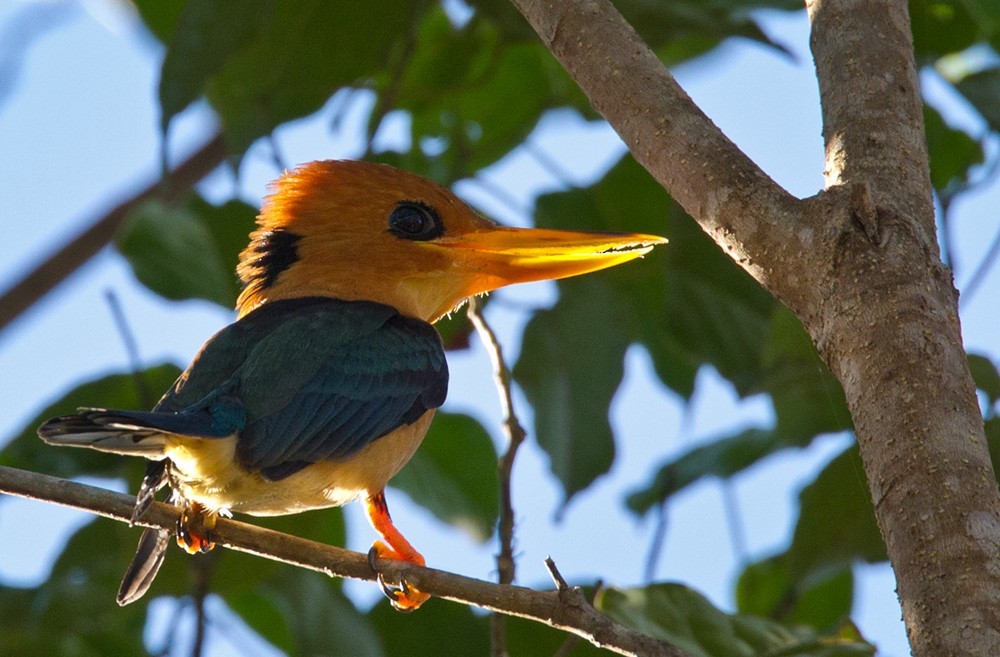Mountain Kingfisher
A species of Yellow-billed Kingfishers Scientific name : Syma megarhyncha Genus : Yellow-billed Kingfishers
Mountain Kingfisher, A species of Yellow-billed Kingfishers
Botanical name: Syma megarhyncha
Genus: Yellow-billed Kingfishers
Content
Description General Info
 Photo By Lars Petersson
Photo By Lars Petersson Description
It is a small kingfisher, with males weighing 52–60 g (1.8–2.1 oz) and females weighing 49–63 g (1.7–2.2 oz). Adults are between 21–24 cm (8.3–9.4 in) in length. Males have a rufous head and underparts and greenish-blue upperparts, along with black loral and nape patches. The tail is dark blue and it has black wing feathers with bluish edges and tips. Females have a black crown and paler underparts. The neck patches are joined at the nape in females, making a bar across the back of the neck. The bill is bright yellow with a dark ridge along the culmen. The iris is dark brown and the feet and legs are dull yellow. Juveniles have a grayish-black bill and mottled-black ear coverts. They also have a larger black area around the eye and dark-tipped feathers on the cheeks and breast. The yellow-billed kingfisher can look similar, but has an all-yellow bill instead and is found at lower altitudes than the mountain kingfisher. It is also larger with a proportionally bigger bill. 
Size
24 cm
Feeding Habits
It feeds on small lizards, insects, and larvae. Hunts by perching in middle and upper canopy for long periods of time, before diving to capture prey. 
General Info
Distribution Area
The mountain kingfisher is endemic to the island of New Guinea, and is found in both Western New Guinea and Papua New Guinea. It is common to uncommon through most of the New Guinea Highlands, except for the Bird's Head peninsula. Reports of the species from the Adelbert Mountains and the Foja Mountains are unconfirmed. The species occurs between elevations of 1,200–2,400 m (3,900–7,900 ft), although they have been reported at elevations as low as 700 m (2,300 ft). At lower elevations,the species is replaced by the yellow-billed kingfisher. The mountain kingfisher mainly inhabits primary forest and secondary growth within its range. 
Species Status
The mountain kingfisher's population has not been quantified. However, due to its relatively large range and stable population, the IUCN lists it as a least concern species. It is reported as being fairly common locally but rare generally across New Guinea. 

 Photo By Lars Petersson
Photo By Lars Petersson